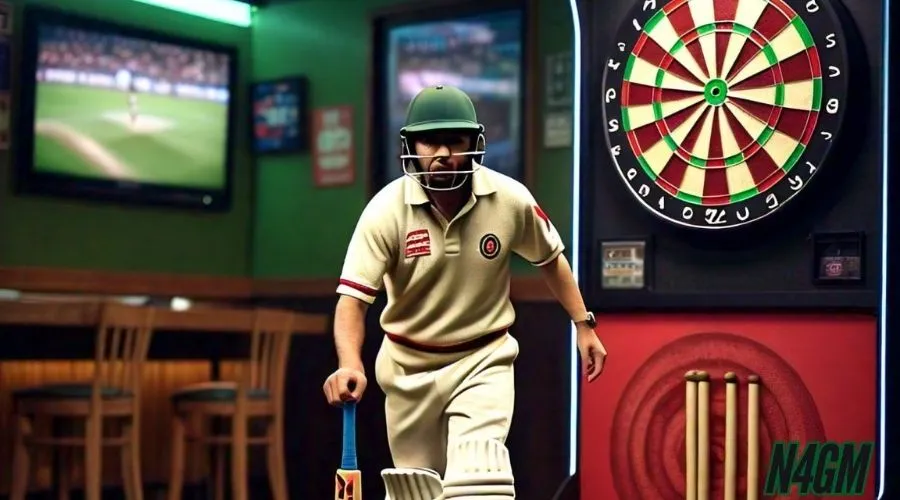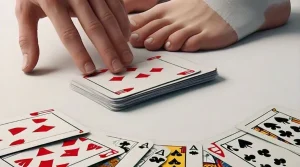Are you eager to elevate your dart-playing skills and master the Cricket Dart Game Rules? If you find yourself confused by the game’s structure, you’re not alone. Many newcomers struggle with the lack of clear instructions. It makes it hard to understand the scoring and track progress.
Scoring can be tough. Players aim for numbers like 20, 19, and the Bullseye. This can leave them feeling lost. Setting up a game can be tricky, too. Players often question who will join and how long the game will last.
Also, without a good grasp of strategy, players may feel aimless, throwing darts without purpose. This guide aims to address these pain points and provide you with everything you need to know.
Get ready to learn winning strategies, avoid mistakes, and become a Dart pro. Let’s dive into the exciting world of Cricket Darts!
Origins
1. Early Beginnings
It is based on the ancient game of darts. It dates back to 14th-century England. Darts began as a military pastime. Soldiers would throw spearheads at the bottoms of upturned wine casks to practice their aim.
This simple activity gradually evolved. Players began using cross-sectioned tree trunks as targets. They awarded different scores based on the wood’s growth rings.
2. Evolution Of Modern Darts
Darts, in its modern form, began to take shape in the late 19th century. This was due, in part, to standardized dartboards. In 1896, a carpenter named Brian Gamlin developed the numbering system that is still in use today.
His design penalized inaccuracy and added a layer of skill. It made the game more competitive. By the early 20th century, darts had become a popular pastime in pubs across England.
3. Popularization And Competitive Play
As darts grew popular, it evolved from a pub game to a competitive sport. Organized championships began in the 1920s. The game’s appeal grew, especially during World War II.
It became a favorite pastime among troops. This exposure helped spread its popularity back home in the United States post-war.
4. Current Status
Today, it is enjoyed by players worldwide, both casually in bars and competitively in leagues. Its blend of strategy and skill makes it a favorite among dart fans.
This ensures its rich history thrives in modern gaming culture. Cricket Darts, whether for fun or serious play, proves the game’s lasting appeal.
Cricket Dart Game Rules And Gameplay
It is a popular twist on traditional darts. It combines skill and strategy in a competitive format. Here’s a complete guide to the rules, gameplay, and strategies to help you excel in this sport.
1. Objective Of The Game
In this game, be the first to “close” all the numbers (15-20 and the bullseye). Also, your score must equal or beat your opponent’s. Players need to hit each number three times to close it. Once a number is closed, any further hits on that number will score points until the opponent also closes it.
2. Setup And Players
This can be played with 2 to 4 players or teams. To start the game, each player throws one dart at the bullseye. The player whose dart lands closest goes first. Players take turns throwing three darts per turn.
3. The Cricket Numbers
The designated numbers in Cricket Darts are:
- 15
- 16
- 17
- 18
- 19
- 20
Bullseye (outer bull counts as 25 points, inner bull as 50 points)
4. Scoring System
- Closing Numbers: A player must hit a number three times to close it. Hitting a triple count as three hits, a double as two, and three singles count as three hits.
- Point Scoring: After closing a number, hits on it score points equal to its value. For example, hitting a triple 20 scores 60 points.
- Winning the Game: The game ends when a player has closed all numbers and has equal or more points than their opponent.
5. Example Gameplay
To illustrate how Cricket Darts works, consider this sequence:
- Player 1 starts by hitting a triple 20 (3 hits), a single 20 (1 hit), and a double 18 (2 hits). They have now opened 20 and scored points.
- Player 2 then throws and closes the 20s but does not score since Player 1 already opened them. They open the 16s.
- The game ends when one player has closed all numbers and has a score equal to or higher than their opponent’s.
Wrap UP
With these rules and strategies, you’re ready to play Cricket Darts. Practice makes perfect. The more you play, the better you’ll grasp the nuances of scoring and strategy.
So gather your friends, set up that dartboard, and enjoy mastering this engaging game! Whether you want casual play or serious competition, use these tips. They will make you a strong player in no time!
FAQ:
1. What is the best strategy for Cricket darts?
The best strategy for Cricket darts involves targeting high-scoring numbers (15-20 and the bullseye) in a specific order. Players often aim for the highest value first (20s), closing them before moving down to other numbers. Balancing between scoring points and closing numbers gives you an advantage over your opponent.
2. How do you win the game of darts Cricket?
To win Cricket darts, you need to “close” all numbers from 15 to 20 and the bullseye before your opponent while also scoring more points than them. A number is “closed” when you’ve hit it three times. If you’ve closed a number that your opponent hasn’t, you can score points on it until they close it too.
3. How do you aim better in darts?
Improving aim in darts involves proper stance, grip, and focus. Stand with your dominant foot forward, hold the dart steadily, and keep your eye on the target. Regular practice, maintaining a consistent throw, and working on arm and wrist stability will also enhance your aim over time.
4. How do you get a perfect score in darts?
A perfect score in darts is achieved with consistent accuracy, often by hitting the bullseye or high-value areas repeatedly. For instance, hitting three treble 20s in a single turn scores 180 points, the highest achievable in one round of three darts.
5. How to calculate a dart score?
To calculate a dart score, add the value of each hit. For example, if a dart lands in a double or treble section, multiply that number accordingly (double = 2x, treble = 3x). Scores accumulate over rounds, and in Cricket, only closed numbers count toward your total score.
6. What is the dart algorithm?
The “dart algorithm” generally refers to a strategic approach in darts where players calculate their shots based on probabilities and scoring potential. It may also involve specific coding techniques in software development, though in darts, it typically means a calculated approach for better scoring and game decisions.







